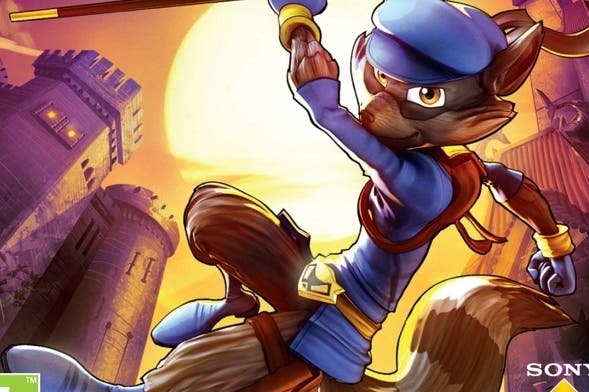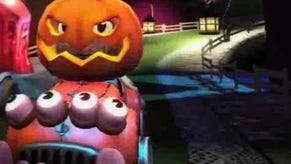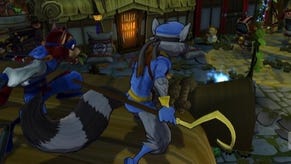Sly Cooper: Thieves in Time review
Stolen moments.
This import review of the US edition of Sly Cooper: Thieves in Time was originally published in February. We present it again today to mark the release of the game in Europe this week.
Sony may have stopped making PlayStation 2 hardware at the end of 2012, but if Sly Cooper: Thieves in Time is anything to go by, then the spirit of PS2 software is alive and well. Pinwheeling through history with Sly and his other anthropomorphic animal buddies on the tail of an arch criminal is like taking yourself back in time to a more innocent and carefree world of gaming - and initially at least, it's a pleasant diversion from all the grit of the present day.
Sly's adventure takes him to ancient Japan, the Wild West, Medieval England and even further afield, and each hop along the timeline is an excuse to rendezvous with one of his ancestors, learn a new skill or two, exchange family-friendly barbs with pantomime villains, and of course to climb around collecting things. This is a game of double-jumps and crates full of coins, where figure-skating bosses are put down by rhythm action and patrolling owl guards waddle adorably in circles and only notice you when you walk directly into their path.
Created in the days when platform game pitfalls were often down to wayward camera angles, Sly can jump in the direction of any object sheathed in glinting blue iridescence and snap to it with a quick tap of the circle button. This kind of semi-auto platforming ability, once born of necessity, has been de rigeur in everything from Assassin's Creed onwards, but Sly still does it with more style than most, leaping onto interesting things like spires and tightropes rather than just the lips of ledges. The fact he arrives there with a tail-swishing twirl elevates him further.
This time around, those spires and tightropes are spread across the ages, and it turns out that time travel is a fine excuse for the wildly differing environments that usually make up character-driven cartoon adventures. Feudal Japan, where Sly joins forces with sushi-inventing ancestor Rioichi Cooper, is a hilly canyon in the lantern glow of late evening, full of warthogs in ill-fitting plate armour patrolling amid the sound of rushing waterfalls. After this, the Wild West level is a sudden blast of sunlight - a frontier town with its own cute little railroad and gold mine - and the later Medieval England, probably the best of the era hubs, is a merry spin on Robin Hood where you prance along battlements and fire arrows to create rope walkways between trees and curtain walls.
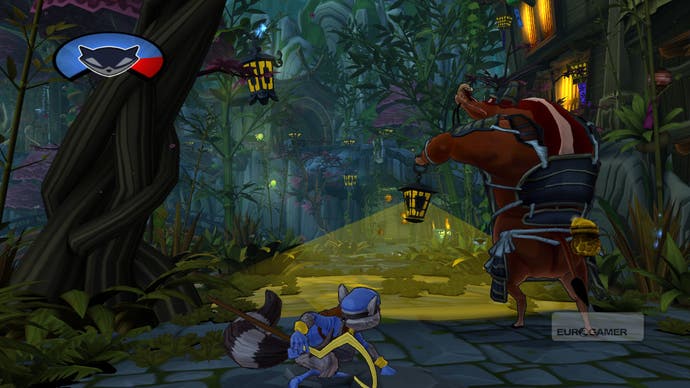
Sly isn't alone among these cheery environments, of course. Wheelchair-bound hacker Bentley, fisticuff-loving hippo Murray (sorry, "The Murray") and nemesis-turned-love-interest-turned-sort-of-nemesis-again Inspector Carmelita Fox are all along for the ride, and they all get their own playable cameos, although you won't look forward to them as much as you do the charismatic blue raccoon.
Striking out from a hideout in each period's open-world hub, the gang takes on missions that crisscross the environment or break out into more traditional linear levels. Sometimes this means a solo platform climb - like a mid-game ascent through a giant circus big top to reach Sly's English ancestor, the Pythonesque Sir Galleth - but the series also has a taste for more outlandish stuff, like a sports training mini-game montage sequence for Sly's puffy caveman ancestor Bob, and an amusing section where The Murray has to hoodwink a roomful of mercenaries by putting on a geisha show. After a few of these outings, the gang pulls together enough intel to take down the local crime boss in a multi-part mission that calls on all their talents.
So far so 2002, then, but once the nostalgia starts to wear off a few things start to grind your gears. Sly picks up new abilities while time-travelling, for example, by collecting special suits, but each one is a letdown, conferring obvious and functional skills like a long-range pouncing move or the ability to break down heavy walls. None of them offers the same tactile pleasure as the simple act of Sly mounting a wall, and they can be fiddly to switch between as well. Other abilities unlocked by spending collected coins are similarly uninspiring - a few new slams for Murray, for example. The most exciting is a parachute for Sly, which you unlock within an hour.
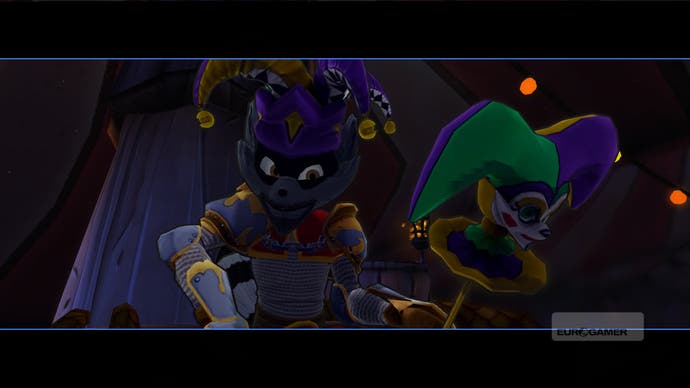
There's nothing much to latch onto beyond the pure thrill of Sly's platforming, and you don't get to do enough of that anyway, as the game cycles through less exciting characters and quirky but unoriginal scenarios (hacking mini-games, bow-and-arrow challenges, even fishing). When you do get your hands on Sly, it's often only for a couple of minutes; perhaps because Thieves in Time needs to function identically on the less powerful PS Vita, most missions feel like they're over before they've really got going. Worse, they're all bookended by long load times that prove extremely distracting in aggregate. The most fun to be had is simply climbing the hubs collecting hidden bottles and Sly masks with no set agenda.
The comedy bad guys almost save the day, but not quite. The cigar-chomping tiger who talks a good fight but always seems to be making a run for it is gone before he's had a chance to wind you up, while an armadillo sheriff so much in love with himself that he devotes a whole festival to his own splendor only really gets a couple of good lines. The one exception is The Grizz, a grizzly bear in pink velour who wears a crown and raps wherever he goes. He's running a time-travelling art hustle and he harbours a secret that will make you laugh as it sets up a memorable (if not especially enjoyable) boss fight. It's a shame he's confined to a mostly forgettable prehistoric section in the middle of the game.
In many respects, then, Thieves in Time is a fitting successor to the PS2 titles: Sly Cooper games were always solid genre pieces first and foremost, where likable characters and decent mechanics masked a journeyman feel to some of the content, and the same is true here. Unfortunately, the rest of the world has moved on considerably in the intervening years, and so what starts off as a welcome regression quickly loses its verve. It's not enough these days to serve up some generic platforming, strap on a few ageing pop-culture jokes ("What are you doing, Bentley?" asks a HAL-style hacking computer that would have seemed out of date a decade ago), and wrap it up in primary colours and cutesy animals. Ni no Kuni, due out at around the same time as Sly, is a very different game, but vastly more artful, magical and affecting, despite making a similar appeal to all ages. Sly could learn from that.
Either way, if Sony brings him back for another instalment, then hopefully he'll be accompanied by a little more ambition.
